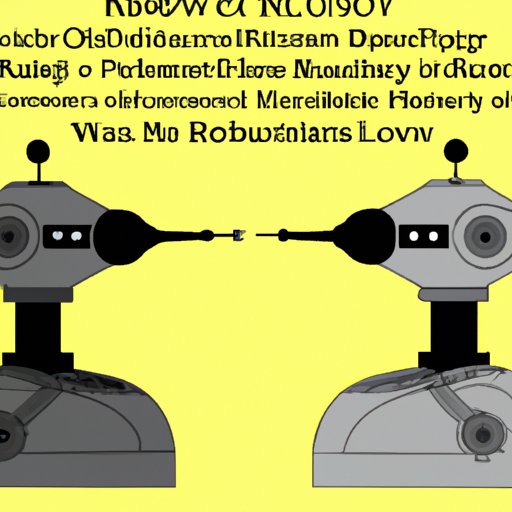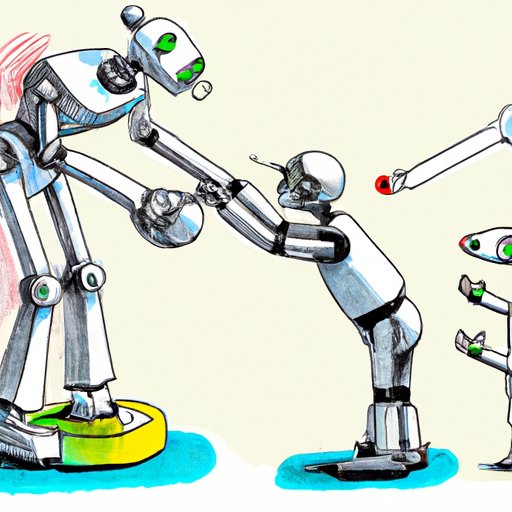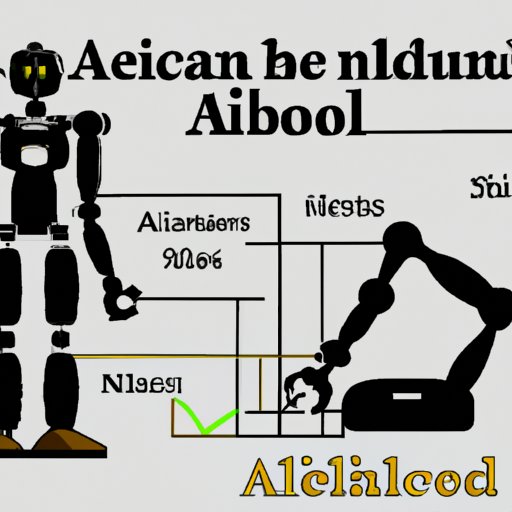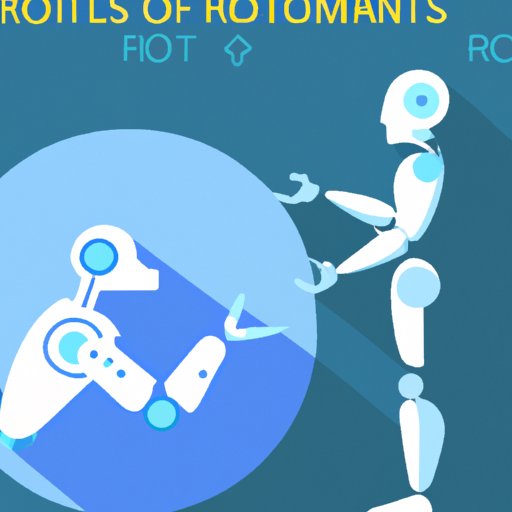Introduction
The concept of robotic laws has been around since 1942 when science fiction writer Isaac Asimov first proposed his Three Laws of Robotics. These laws were designed to protect humans from potential harm caused by robots and are still widely referenced today. But are these laws actually real, and if so, what implications do they have for the development of robotics and artificial intelligence (AI)? In this article, we’ll explore the history of robotic laws, examine their relevance to current technology, and discuss the ethical and practical implications of their application.

Examining the History of Robotic Laws and Their Relevance to Current Technology
Historical Context
Isaac Asimov’s Three Laws of Robotics, as outlined in his 1942 short story “Runaround,” were designed to protect humans from potential harm caused by robots. The first law states that a robot must not harm a human being or, through inaction, allow a human being to come to harm; the second law states that a robot must obey orders given to it by human beings, except where such orders would conflict with the first law; and the third law states that a robot must protect its own existence as long as such protection does not conflict with either of the other two laws.
Since then, the concept of robotic laws has been explored in numerous works of fiction, including movies, television shows, and books. However, despite their popularity in popular culture, there is still debate over the extent to which robotic laws can be applied in reality.
How Robotic Laws Have Evolved Over Time
In the years since Asimov’s original Three Laws of Robotics, numerous variations have been proposed. For example, some have suggested adding a fourth law that states that a robot must perform its duties without violating the rights of other sentient beings. Others have proposed adding additional laws that focus on safety, security, and privacy.
Despite the evolution of robotic laws over time, their core purpose remains the same – to protect humans from potential harm caused by robots. As robotics and AI continue to evolve, it will be important to consider how robotic laws can be applied in practice to ensure the safety of both humans and machines.
Implications for Modern Robotics and Artificial Intelligence
As robotics and AI become increasingly sophisticated, the need for robotic laws becomes even more important. Robots and AI systems are increasingly being used for a range of tasks, from manufacturing and healthcare to transportation and military applications. As such, it is essential that these systems are programmed to adhere to strict safety protocols and ethical standards. This is where robotic laws come into play, as they provide a framework for ensuring that robots and AI systems are programmed to act responsibly and safely.
Exploring the Ethical Implications of Robotic Laws and How They Might Be Applied in Practice
Ethical Considerations in Applying Robotic Laws
When considering the ethical implications of robotic laws, it is important to consider how they might affect the decisions made by robots and AI systems. For example, if a robot is programmed to follow the first law – not to harm a human – then it may be faced with an ethical dilemma if it is tasked with a job that requires it to do something that could potentially cause harm to a human. This raises the question of whether robots should be allowed to make autonomous decisions and, if so, whether they should be held accountable for their actions.
Potential Benefits of Robotic Laws
Although there are ethical considerations to take into account when applying robotic laws, there are also potential benefits. For example, robotic laws could help to ensure the safety of both humans and robots by programming robots to act responsibly and follow safety protocols. Additionally, robotic laws could help to minimize the risk of injury or damage caused by robots, as well as reduce the potential for robots to be used for malicious purposes.

Investigating the Potential for Robotic Laws to Improve Safety and Security
Improving Human-Robot Interactions
One of the potential benefits of robotic laws is that they could help to improve human-robot interactions. By programming robots to understand and adhere to safety protocols, humans will be more likely to trust and interact with robots. This could ultimately lead to improved efficiency and productivity in a variety of industries.
Minimizing Risk of Injury or Damage
Robotic laws could also help to minimize the risk of injury or damage caused by robots. By programming robots to follow safety protocols, it could reduce the potential for accidents or malfunctions that could lead to injury or damage. Additionally, robotic laws could help to prevent robots from being used for malicious purposes, such as hacking into computer networks or causing physical harm to people.

Analyzing How Robotic Laws Might Affect the Development of Artificial Intelligence
Impact on Automation
Robotic laws could have a significant impact on the development of automation and AI. For example, if robots are programmed to adhere to certain safety protocols, then it could lead to increased efficiency and productivity in a variety of industries. Additionally, robotic laws could help to reduce the risk of accidents or malfunctions caused by robots, which could help to make automation and AI systems more reliable and trustworthy.
Potential for Autonomous Decision Making
Robotic laws could also have implications for the development of autonomous decision-making capabilities in robots and AI systems. For example, if robots are programmed to adhere to certain ethical standards, then it could lead to the development of robots that are capable of making autonomous decisions based on ethical considerations. This could ultimately lead to greater autonomy and independence in robots and AI systems.
Evaluating the Impact of Robotic Laws on Human Behavior and Decision-Making
Influence on Society
Robotic laws could also have an impact on human behavior and decision-making. For example, if robots are programmed to adhere to certain ethical standards, then it could lead to changes in the way humans think about ethical issues. Additionally, robotic laws could help to shape public opinion about robotics and AI, as well as influence the development of policy and regulation in this area.
Impact on Personal Choice
Robotic laws could also have implications for personal choice. For example, if robots are programmed to adhere to certain safety protocols, then it could lead to the emergence of “safe” robots that are less likely to cause harm to humans. This could ultimately lead to changes in the way humans interact with robots, as well as the types of robots that are available for purchase.
Conclusion
In conclusion, robotic laws are an important concept that have implications for the development of robotics and AI. Although there are ethical considerations to take into account when applying robotic laws, there are also potential benefits, such as improved safety and security, increased efficiency and productivity, and the potential for autonomous decision-making. As robotics and AI continue to evolve, it will be important to consider how robotic laws can be applied in practice to ensure the safety of both humans and machines.
Summary of Findings
This article explored the ethical and practical implications of robotic laws, analyzing how they might affect the development of artificial intelligence, human behavior, and decision-making. It looked at the history of robotic laws and examined their relevance to modern technology. The article concluded that robotic laws are an important concept that have implications for the development of robotics and AI. Although there are ethical considerations to take into account when applying robotic laws, there are also potential benefits, such as improved safety and security, increased efficiency and productivity, and the potential for autonomous decision-making.
Future Outlook
As robotics and AI continue to evolve, it will be important to consider how robotic laws can be applied in practice to ensure the safety of both humans and machines. Additionally, further research is needed to explore the potential for robotic laws to influence human behavior and decision-making. Finally, it will be important to consider the ethical implications of robotic laws and how they might affect the development of artificial intelligence.
(Note: Is this article not meeting your expectations? Do you have knowledge or insights to share? Unlock new opportunities and expand your reach by joining our authors team. Click Registration to join us and share your expertise with our readers.)
